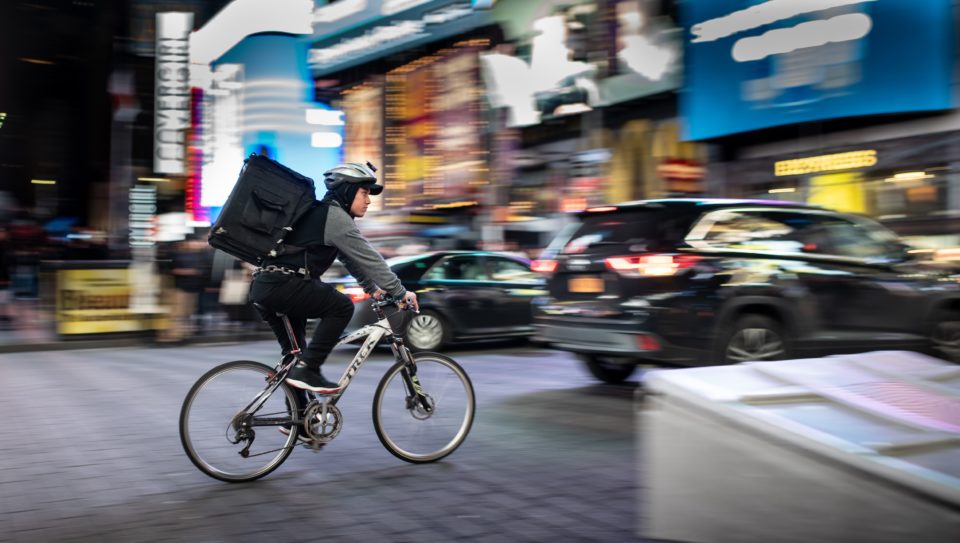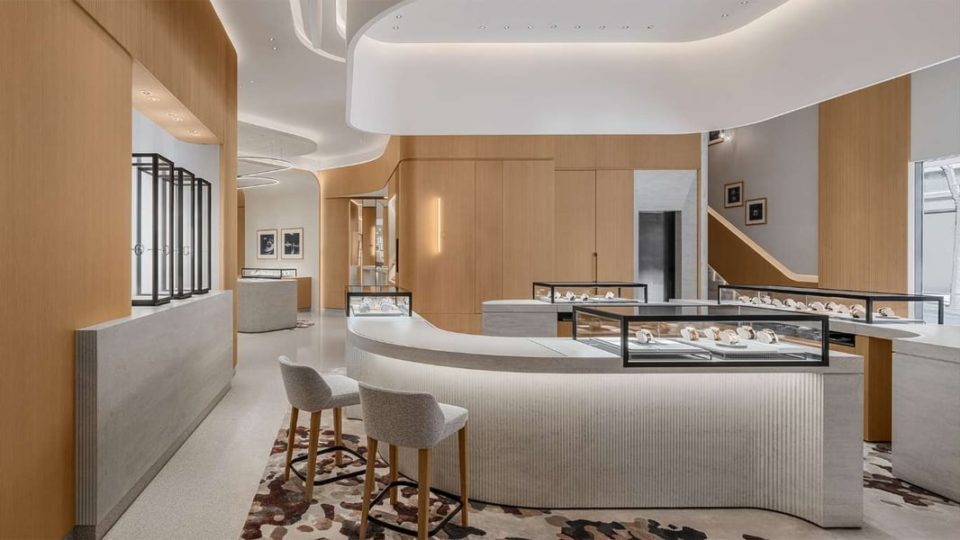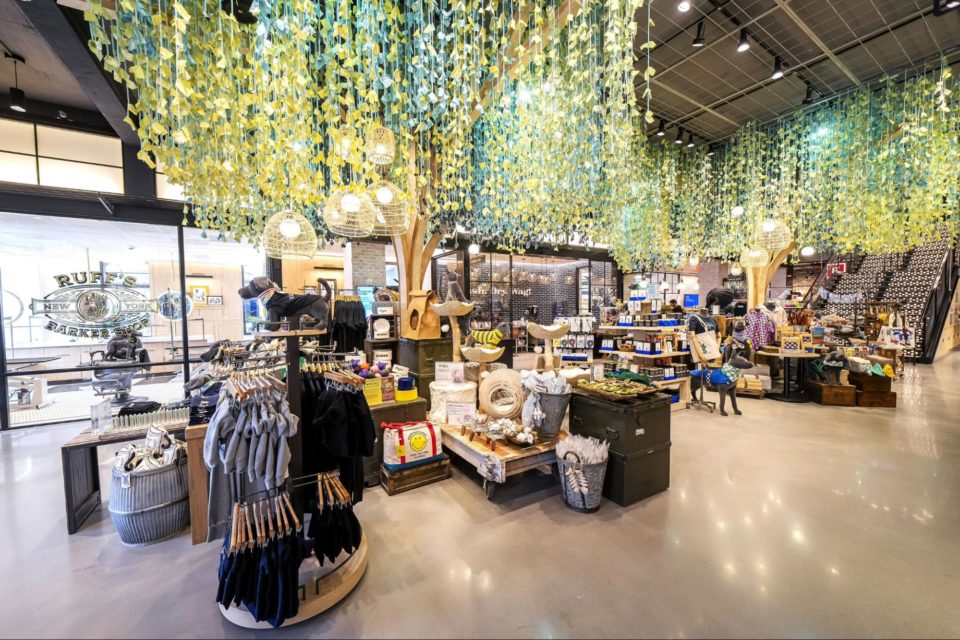Retail magic – why Katjes Magic Candy Factory began 3D printing candy
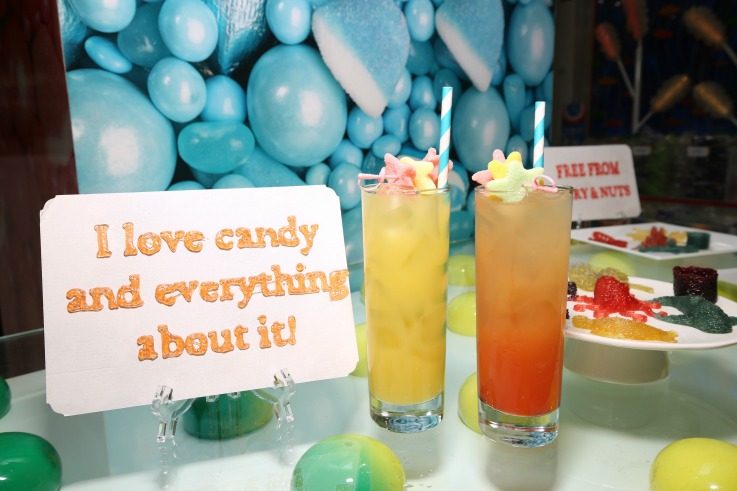
That’s right – Katjes Magic Candy Factory is the world’s first producer of 3D printed gummy candy. And good at it too. The company launched only two years ago and now has over 100 printers in 35 locations around the world. It seems that the marriage of interaction, technology and sweets is a winning one with customers.
Drawing on her own experience in gummy candies, founder Melissa Snover tells us how she partnered with 100-year old family business Katjes, why they embraced 3D printing, how Magic Candy Factory puts creation in the hand of the customer and the importance of the live experience.
Can you tell us about how Katjes Magic Candy Factory came about?
We only incorporated the company in April 2015. I started my first confectionery brand when I was 27. It was called Goody Good Stuff, and it was the world’s first vegan gummy candy range. It was really exciting. I ran that company for just under three years and we expanded into 40 countries.
We were in about 40,000 points of distribution across the world when I sold it to Cloetta at the end of 2014. It was an amazing journey, and it taught me a ton about every part of creating products for retail and mass production, and the way that different levels of retail work in supermarkets and department stores and specialty retail.
One of the things that frustrated me is that we got asked all the time, “Can you make me this, customise this? Can you make me a small run of this? Can you do us a special seasonal, so and so?” It’s just not possible with mainstream manufacturing unless you have money to burn. You just can’t use small-run products or individualised products and certainly not personalised products.
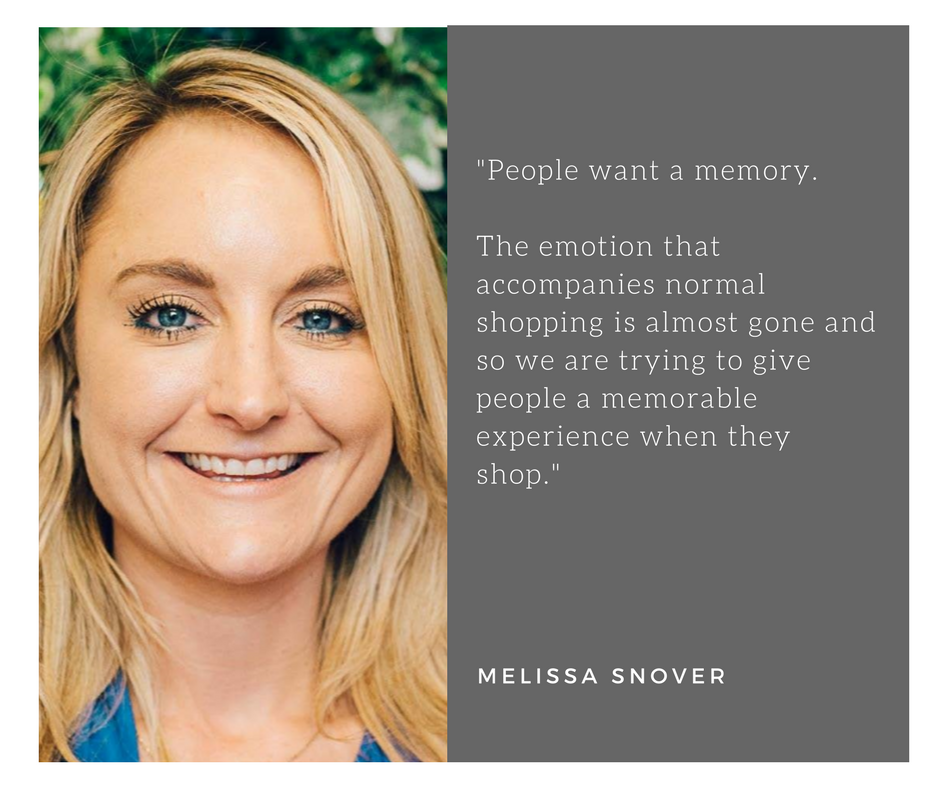
When I sold Goody Good Stuff, I was very lucky to meet the wonderful team at Katjes during the selling process. When I finished that transitional period, we got together and he said, “You know, we would love to work with you if you want to be an entrepreneur again and can we work together in the next project?”
Katjes is an amazing business. They have just converted their entire portfolio of products to vegetarian, and they are the first mainstream manufacturer to do that in candy. It’s 100 years old, still run by the same family that started it – it’s called Katjes because that means kitchen in Dutch. My partner, Mr. Bastian Fassin, is the great-grandson of the man who made the first ever liquorice katje.
It’s just a great partnership, because we get this heritage, knowledge, and support and backing and all of those great things that you get from being a big company. But at the same time, we at Katjes Magic Candy Factory get to behave and manoeuvre and be fast like a start-up.
We operate the company from the UK, but we have this wonderful resource and support from Katjes in Germany and all the knowledge that comes from making candy for over 100 years, and so it’s an amazing partnership.
How did the 3D printing technology come about?
We wanted to find a way to make personalisation, customisation available so that the consumer could become the candy maker. I think if you’re dreaming of making products that make people’s lives better, and you can actually allow the customer to choose and make their own personal creation, so that every single time you sell something, it’s the perfect product for the customer, that’s a dream come true.
It was just the situation of how do we do that in a way that actually could be scaled to a retail model. How do we bring the enjoyment of creation and the actual making process of candy in front of the consumer and make it fast enough and easy enough to do that they’ll enjoy it. That’s not easy to do and it’s not easy to find. I think you see people making chocolate because it’s just melted and then they pour it, etc., and that’s not uncommon, but very rarely do you see people making fresh candy.
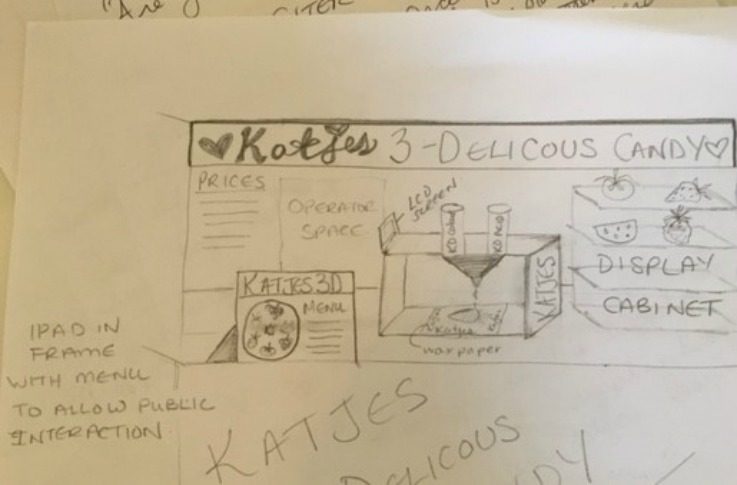
We thought about it a lot and we did lots of different things, and 3D printing is so hot at the moment. The day that we started the business I drew a picture of what I wanted the stores to look like, with a retail cabinet, a printer, and all these samples and a tablet computer where people are designing. Now it’s almost exactly like the vision that we had from day one.
Our idea was that we would actually change the way people buy candy, not just from the manufacturing side but also to make it an experience. I think that if you talk about retail trends that are really important for the future, we all have Amazon, but there’s something missing that the shopping centres of the past used to give us.
This is interaction with people, looking at new products, the smells and the sounds and the excitement of being around a lot of people. That’s going away because of all the online shopping, so things like Build-A-Bear, Magic Candy Factory they’re experiential. Although of course you can buy it online, it’s not the same as when you get to experience it live. I think that is something that we worked very hard to basically perfect.
As far as the science goes, we are the only food-safe FDA-FSMA compliant food printer in the world where you can actually make products live in a retail environment and sell it at the end of it. There are lots of people playing with 3D food printing, but really you need an expert in order to do it, and it needs to be in a controlled environment.
What we wanted to do is to be able to say to a chain of stores, here’s a bunch of printers. The people who work at your store who have no experience with 3D printing, they can use it, and the consumer, who has no experience with 3D printing, they can also use it. On top of the printer we developed a patented recipe of ingredients which are just for 3D printing because regular confectionery, especially gummy candy, takes three to five days to dry in a traditional manufacturing line.
Our large facility in Emmerich, where we make a lot of our other candy, half of the whole facility is the drying rooms where the candies are sleeping while they dry. Then they get shaken out, and rolled around, and then they get put into a bag. That drying time is a humongous part of the process, the evaporation of the moisture gives the texture of the product.
If you put a regular gummy candy recipe in a 3D printer, it would print a puddle of nothing, so we had to create a totally new recipe and the team at Katjes were insanely good at that, and we were able to do that really relatively quickly.
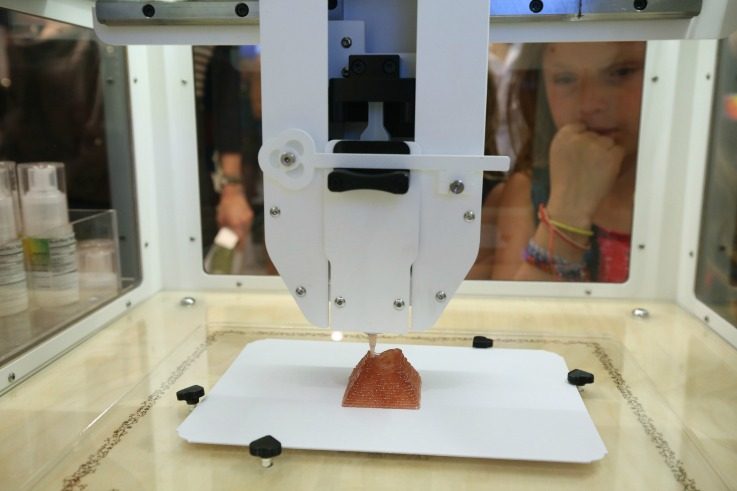
Then we developed a prototype printer. We launched it into a beta store, and then there came the software. On the first launch day the printer was huge. It wasn’t super slow, but it certainly was nowhere near as fast as we have now. But one thing was missing was the software, so we had a fake software that made people think they were designing it, but they weren’t actually. They were just sending me an email with what they wanted, and I had to spot code the design and create it while they were waiting, and then send it and it would print. I was literally stuck behind the laptop making coding for the candies that people wanted.
We knew that although people were immediately drawn to it, we had to make it easy for everyone to be able to use it. So we invested a humongous amount of our time and resources and energy into creating the world’s first ever truly plug-and-play design software, which is the Magic Candy Factory app. Through this app, people are able to write words, draw pictures, combine 3D shapes, upload photographs, and then the system creates the code automatically in the back-end.
It’s a game changer, not just for us, but for 3D printing in general because it mainstreamed a very technical innovation, just like the iOS software made smartphones mainstream. Smartphones were around for seven years before everybody wanted one. It was iOS and Android, and the usability that actually made the mainstream consumer market catch on to it.
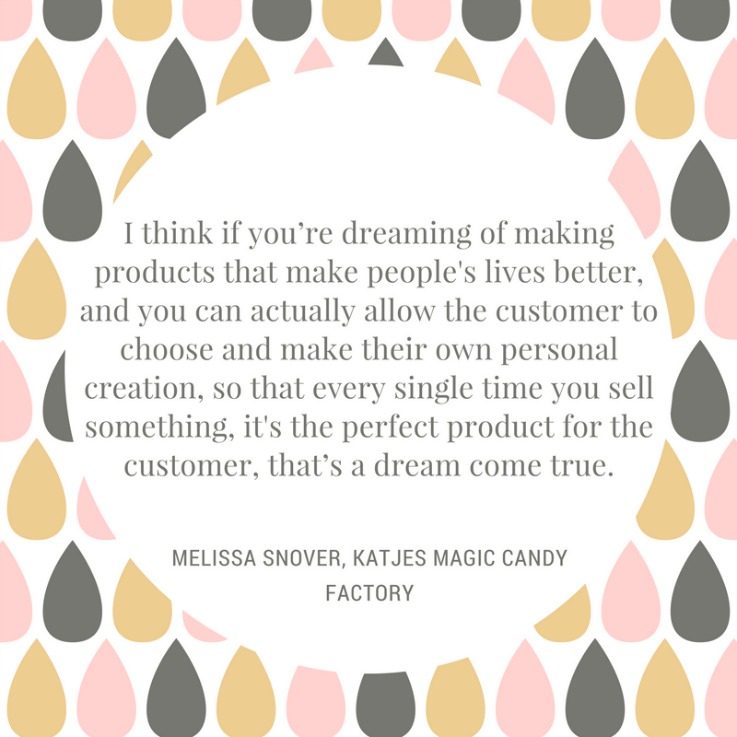
What is the current status of the business?
In the first two years, we have launched Magic Candy in 35 locations around the globe. We have over 100 printers that have been deployed out into the market. We have printers in specialty retail in duty-free and airports, at events companies, expo companies. We have people using them for birthday parties. We have people using them for corporate gifting.
It is just amazing to see all the different ways that people have taken our innovation and capitalised on and use it in different market applications. This year we’re launching into some even more exciting things including a very large amusement park company in the US that we’ve just done a deal with.
This is a whole other side for the business where we can utilise the printers, and it’s a different part of the retail sector that we would not normally really get access to. The printer is what we call edutainment, so it’s educational but it’s entertaining at the same time. For things like amusement parks it’s a fantastic pitch.
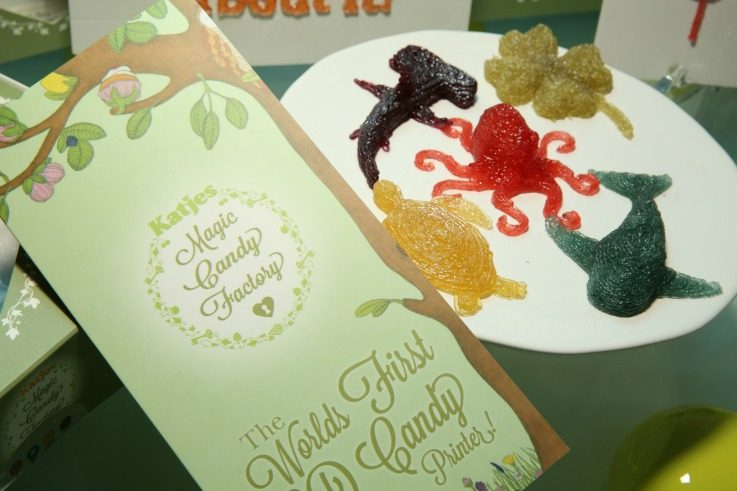
What has the response been like to the concept of 3D printing food?
The response from the market is amazing. It’s quite scary when you develop a product because you’re just there trying to get it to work. Then on the day that you launch it, you hope everybody likes it when you haven’t even really truly seen the reaction from a consumer yet, and then when they do, it’s a wonderful feeling.
It is great when you watch the kids watching it, when you watch older people. We had a man who was 72 years old the other day, and he probably never thought in his life that he would use a 3D printer, and he’s using it. He loved it.
I think in the very beginning when you do something totally new, there’s not so many guide books on what to do next, where to take it, what to do. Because of the resources and access to all these different places, we’ve been able to do so many different market tests in lots of different situations, lots of different consumer demographics, lots of different positioning. It’s really great to see that you can, not just the product that this printer makes is customisable, but the way that you can position it is also customisable. It’s actually working well in lots of different ways.
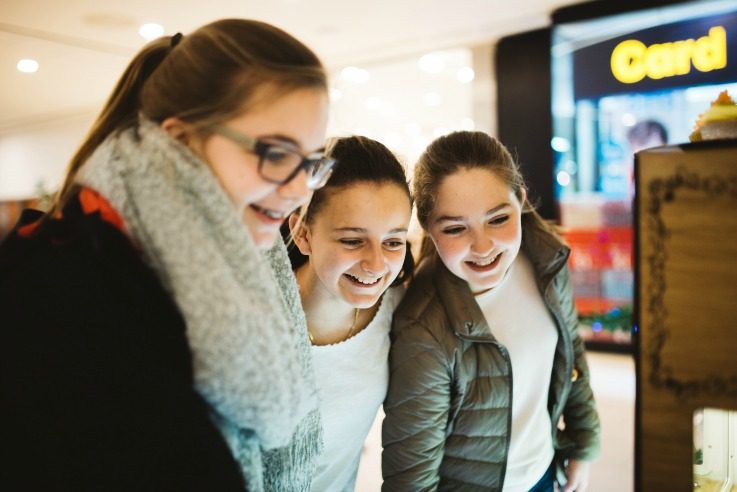
What is the feedback from customers?
I think people are entranced by it when they watch. It’s so personal for them when it’s their own candy. We just added a new feature, based on consumer feedback, so we now have cameras inside all the printers. When a customer makes a candy, it automatically records the time-lapsed video and sends them an email with a link to their time-lapsed video. So then they can share it and they can watch it print again and again. It takes 15 seconds on the time lapse. It’s amazing how many people have gone back and watched their video over and over and over again.
I think the other thing people ask us is, “when are you going to make it for the house, for the home?” That’s definitely something that in the future we have interesting ideas about. In the first instance, it’s really important that we take our time at this stage in the market. We need to make sure when people experience it that it’s perfect every time, that it’s truly magical, that they get to enjoy the process of creating as opposed to seeing the printer as a cold hard machine making food.
If we brought out a printer right now that printed Sunday dinner, you’d be like, “What?” It would be too much. We would get a lot of press, there’s no doubt, but you would not get people actually buying into the product because it’s too far of a jump. Candy is the first medium to get people interested, excited, and delighted by the prospect of being able to create something you choose on demand for no extra costs. That’s the first step and then who knows where we can go from there.
How do you pull people into this new technology of 3D printing?
The key is not to be scary at all. The printer is in this beautiful wooden box which is engraved. It’s small and it’s quick and the software is really easy to use it. The whole idea behind it is that science when sufficiently advanced is indistinguishable from magic.
It’s our huge inspiration for the name of the product and the whole concept looking more like magic happening than a bunch of science working very hard.
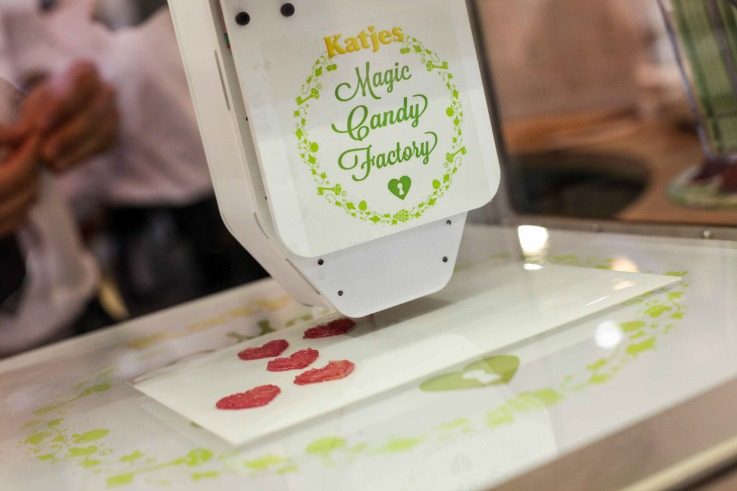
Do you think that human connection is something that’s been forgotten in retail?
Yeah, I think absolutely. We spent 40 days in different shopping centres across the United States and the UK. I think one of the things that we would say is that you know most of these places look exactly the same, and most of the stores that you can see, a lot of them you could buy all that stuff online.
The thing that kept people going clothing shopping in the store was that they didn’t want to pay for something that didn’t fit. But now, you can return everything for free, one-day delivery. It’s difficult to make an argument against it.
We’ve also been to some incredible places in Europe, and they’re starting to do them more and more here in the UK, where the shopping centre is focusing on the fact that it’s the day out. There’s lots of restaurants, entertainment opportunities, special retail that’s not necessarily available everywhere. Of course, you have anchor stores still, but I think that is the future and it must be because that’s what gets people out.
People want a memory. The emotion that accompanies normal shopping is almost gone and so we are trying to give people a memorable experience when they shop. Being able to delight and entertain your children, it’s that’s hard to do, and moms and dads have to do that every day.
I think those are the really great opportunities for people to do that, but at the same time they still run a couple errands, grab lunch, and make it into a day or a half day. I think those are very wonderful concepts, but it’s not inexpensive. Magic Candy is £5 – £10, so it’s a little bit more affordable but also so that everyone in the group can get one. I didn’t want to price the products so high up out of the market. To be honest we could have named our price because we’re the only ones who can do it, but that’s not the point. We want everyone to be able to experience it. Obviously, it’s an exclusive experience because we only have so many printers and we can only make so many, but it is not an elitist experience. I want it to be attainable for everyone to enjoy.
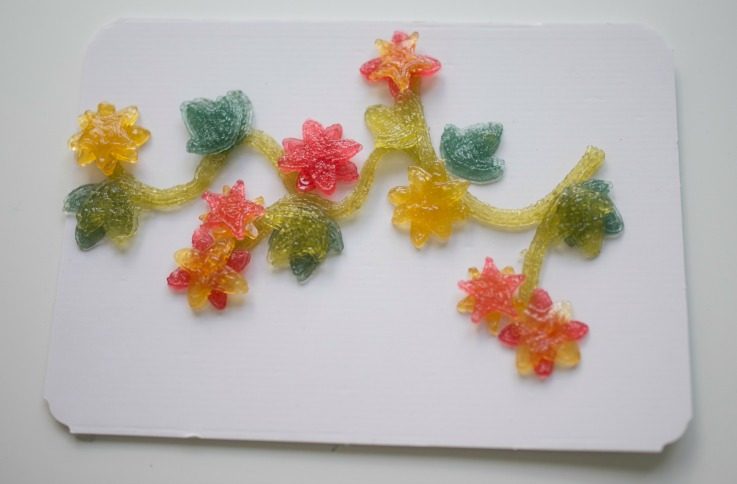
How do you see the free-from/vegetarian/vegan trend developing?
The free-from market is growing and vegan is actually the most surprising huge growth trend if I’m going to be totally honest. I think when I started Goody Good Stuff, there was a time when we wouldn’t even put vegan on the front of the pack because it was too extreme for the mainstream consumers.
Now when we say vegan, vegan is cool. Everybody’s talking about vegan. But we didn’t do it specifically because of that. I don’t make products that aren’t veggie because I don’t agree with it. Our products are clean and pure because the recipe itself is just literally five things: apple pectin, citric acid, glucose from vegetables, fruit purees, and vegetable extracts. That’s it.
I think that is also the other thing: it’s natural. Free-from is growing massively, but we’re more focused on the idea that we want our products to be inclusive and available to everyone. Rather than that we developed the recipes specifically to go after a specialty sector. Our products are kosher and halal-friendly also. Really what we want is for everyone to be able to enjoy them and I think that’s the key.
The reason that manufacturers use certain ingredients varies. It varies between pricing. It varies because that’s always been that way. I think if you want to be a global business you need to understand that dietary trends, cultural moves, and things like free-from exist in different levels all over the world. If you make your product inclusive, then you’ll never be shut off to a new market. There won’t be any market in the world that you can’t touch.
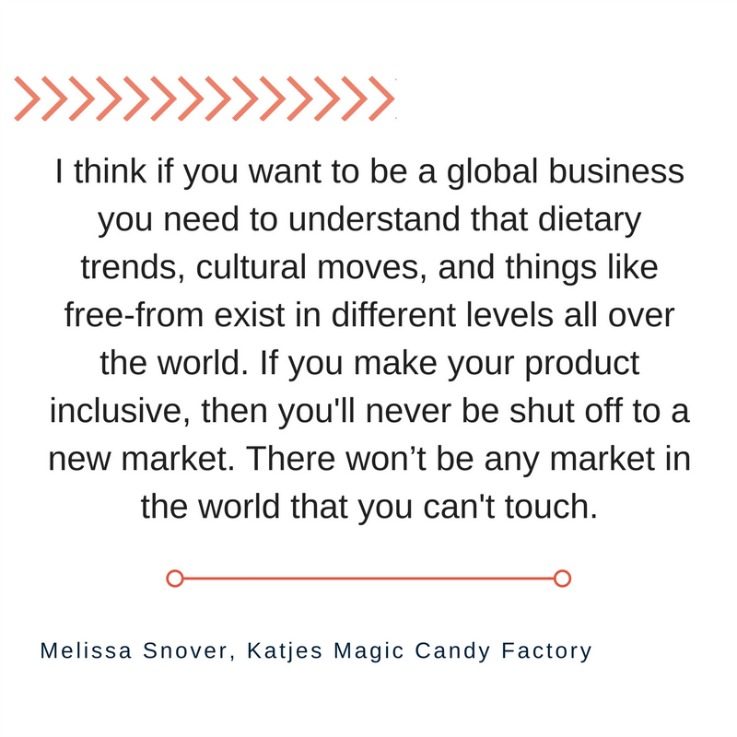
Is there anyone else that is out there in the industry that does edutainment well?
It’s difficult to pinpoint somebody who’s doing it really well. There are some great concepts around like the National Geographic and stuff in America. We don’t have them over here in the UK sadly, but you can go and experience being in the middle of a live shoot in the Amazon.
They’re like activity centres. They’re not an amusement park, but they’re like a miniature amusement park. You go in and there’s lots of different exhibits, but some of them are a bit like a ride, and then there’s little games that you play with each one. They’re not like a full museum experience and they’re also not an amusement park. It’s like somewhere in the middle. They also have the Marvel Academy where you can go and learn how to be a superhero and learn survival techniques.
I think there’s a lot of opportunity over here to do more of that. I think a lot of it is still a little bit underdeveloped, if I’m going to be honest.
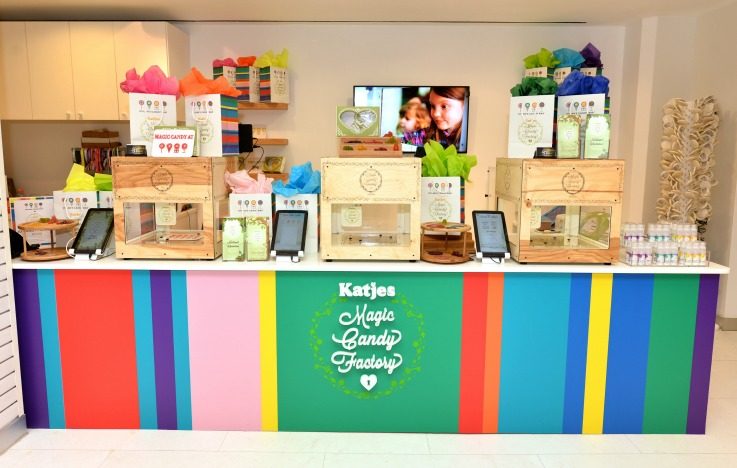
Are there any particular people or companies that stand out to you as doing something really well?
I think the Dylan’s Candy Bar retail concept in the United States is ridiculously good. It’s so outstanding. They have a floor that’s made out of candy – five storeys of candy and the wallpaper is made out of candy and the pictures on the wall are made out of jelly beans. Their commitment to the execution of their craft in such a humongous space is outstanding, and I was so happy when they became our first partner for the US market for Magic Candy.
They have three Magic Candy factories in their New York flagship store now, and it’s wonderful. That’s a dream come true, but I think as well you know there are people across lots of different spectrums. We were extremely impressed with Fenwick in the northeast of England, they’ve redone their food hall and it is outstanding.
All these amazing brands, especially exclusive products that you’ve never seen from those brands before, but in addition to that, locally-made products and products only made from the UK. It was so beautiful, and so artisan. Everything was just done so well and all of the people in the store were experts at the department that they were in, telling stories about the different products that they had.
It reminds me of the way that it should be. That’s why you should really go to a store to get expert advice. We believe in the Amazon reviews, but let’s be honest, a lot of them are coming from robots. We used to go to the store to say, “I’m looking for this. Do you know of anything?” Then a person in the store would be an expert and they would help you and they would guide you.
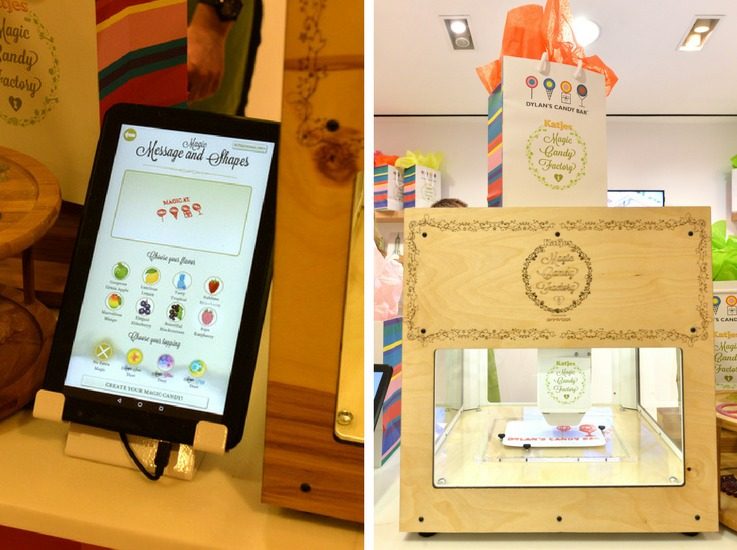
Do you think storytelling is a key part of retail? Is that something people are looking for?
I think that department stores are finding that one of their biggest growth areas is their gourmet food section. You can see it in all of them – Harvey Nichols has one now, Harrods has always a gold standard, Selfridges makes it the showpiece of the whole store. They don’t put stuff there unless it’s good for getting people’s attention and pulling them off the street. They also have an amazing way to showcase brands.
I think those kinds of things that are more experiential side of retail, you’re not going to see that online. You’re never going to get the full experience of that online, and I think that’s really nice. I think that’s why people go there. To be able to eat lunch and shop in the same store, it’s perfect! Why would you not want that?
But I also think it’s important to know that people also want brands. Other than the Harvey Nichols’ Champagne Bar, which is an exception, people want brands. When you see the M&S Café, is it good to grab something to eat when you’re starving? Yes. But is it somewhere you would schedule a lunch date? No. But if you go to Selfridges, you can have a lunch date in one of the restaurants. At Harvey Nichols, you can. At Harrods, there’s a multitude of places you can go.
I think that is one of those combinations that works really well because people stay in the store longer.
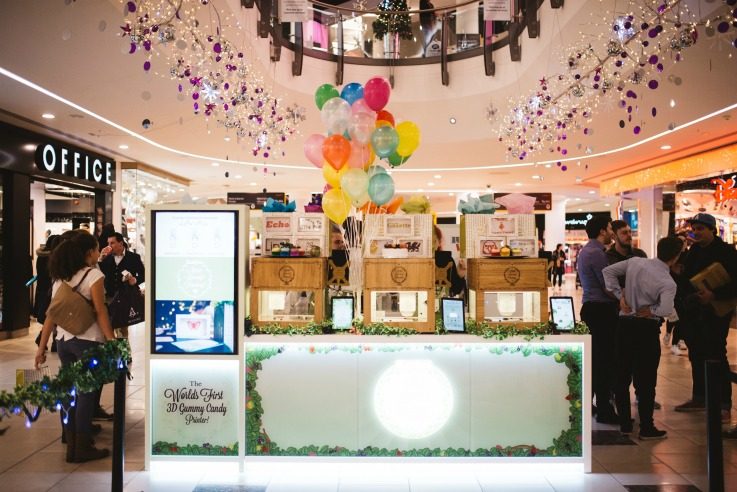
What’s your strategy in terms of your online offering?
Generally we mostly work with partners in order to reach the end-consumer, but of course we use our online presence as our window to the world. We showcase all the different products that we have. You can get some things on our website, but in general we mostly get leads for people who want to either bring Magic Candy Factory into their own retail location or are looking for Magic Candy Factory at an event.
We have made a concession to allow video so at least people can see it being made. But I still think there’s something extremely important about the live experience that you can’t replicate online and that’s why we don’t push online sales really. We want people to be in stores experiencing the product.
The sharing of the videos online is crazy. People put them on their Facebook feeds, and everybody watches them, and they’re like, “Whoa! You get that!” It really is self-perpetuating in that way and it’s really nice. When people make something themselves, they of course share it. It doesn’t feel like they’re promoting another company. They’re actually showing, “Look, what I made!” and so it’s really nice because we’re together on it.
Images courtesy of Katjes Magic Candy Factory.
Get up to speed on why dialogue and interaction are the future of retail marketing and how you can make this part of your business.
Want insider insights on the latest retail trends? Get in touch to book one of our New York retail safaris and find out how to boost your business.

